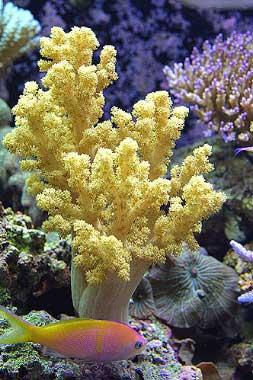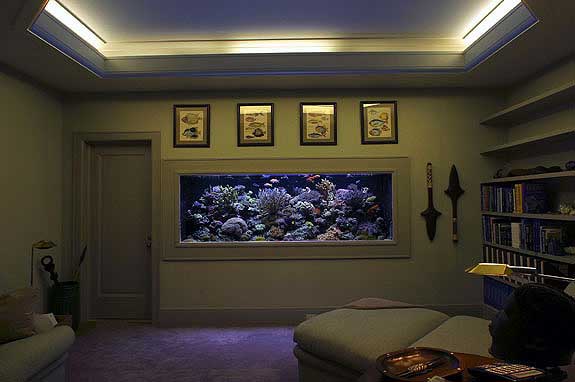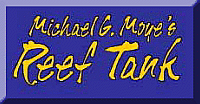
|
|
|
Michael G. Moye's (64Ivy) Reef Aquarium
It should go without saying that it is both an honor and privilege to have been nominated as RC's March Tank Of The Month. But I'll say it anyway since it looks a bit more dignified then beginning this article by yelling, "WHOOHOOOO! YEAH, BABY! THAT'S WHAT I'M TALKIN' 'BOUT!" In many ways, this is very much like earning a diploma; except it's a recognition of the education garnered in the kind of 'hard knock' schools that only we reefkeepers could attend. Personally, I never thought I had the grades to pull this off, though. While I recall aceing "Accidentally Inhaling A Pint Of Used Saltwater 101," I did pretty poorly in "Beginning Patience, Attitude, and Tank Compatibility Practices." And although I did well in "Elementary Self Electrocution," "Lionfish Spine Interaction" (I had to repeat that one), and "Valonia and Mantis Shrimp Propagation," I thought my utter failure in "Remedial Leaving Well Enough Alone" would completely knock me out of the running. Thank God, I guess, for bell curves. So again, I would like to thank everyone involved for this totally unexpected honor. Now, on to "Reefkeeping High School." Excelsior!
Tank And Tank History: My tank's dimensions are 96" x 36" x 36". It's approximately 500 gallons, but with my sump and refugium, the total water volume is well over 600 gallons. It is constructed of 1" thick acrylic, built into the wall, and has a black back with twin corner overflows that are kept blissfully quiet by a pair of slightly modified Durso standpipes. It is being kept with a bare bottom and is approximately 70/25/5 percent 'SPS'- to-'LPS'-to-softies in terms of livestock ratio. Also, as of this writing there are 27 fish, but more about them later. The actuator unit wavemaker is pretty cool too. This unit is a device that can be programmed to alternate water through two (or more) sets of returns at regular intervals by way of a set of gates that open and close electronically. My unit is set to alternate approximately every 30 seconds from a return on one end of the tank to a return on the other; the amount of flow is governed by an Iwaki 100RLT. Again, the advantage to this set up are no powerhead intrusions into the reef; just two return nozzles on either end of the tank are, in effect, my wavemaker. The negative is the noise factor of the electronic gates opening and closing every half minute which makes a “whiiiiiine-click---whiiiiine-click” sound that can actually be heard over the Iwaki. Therefore, both my actuator unit AND the pump that runs it are placed on the other side of a wall with my chiller and swimming pool equipment. For those who are interested and have the room to spare, my unit is the George Fischer EA 20 and the company can be reached toll free at (800) 854-4090. With all these pumps, my turnover rate is still only 10-12X, but I still get good, strong (albeit sometimes wacky) coral growth patterns, so I don’t really sweat it. The tank is lit by six 250 watt Aqualine Buschke 10,000K bulbs, each nestled in its own Spiderlight™ reflector. They are augmented by four 160 watt VHO actinics. Lighting times are done in stages from 7:00 AM until 9:00 PM. Click here for a slideshow of the photoperiod.
| |||||||||||||||||||||||||||||||||||||||||||||||||||||
|
When the tank was first set up in 1996, it was a disaster. Mantis shrimp populations and Valonia outbreaks resulted in two complete teardowns, and because of my unexpected travels back and forth to California (some of you might have heard, I used to produce, write, and create TV sitcoms), the tank languished. Then in 1998, I settled down and really worked hard on doing it right. That meant going much more s-l-o-w-l-y. Well, I had just left Hollywood. I wasn't used to going slowly. My wife, however, wasn't used to an 8 foot by 3 foot by 3 foot empty box in the middle of the wall, either, so we compromised: I was going to make it work, and in turn… I was going to make it work. In the beginning, it was my intention
to set it up as an 'LPS' and softie tank. But about a year
later, the "acromania bug" hit, and with help
from noted reefkeeper/author Gregory Schiemer (not to mention
a blasted fortune in upgrades), I was well on my way to
success. In fact, I will never forget the day I found that
one of my not-so-newly acquired acro frags was first starting
to encrust its base. There I was in my 40's (a former Hollywood
producer, no less) and I'm running around giddy, like a
kid who just found the Playboy Channel! I simply can't recall
many other times I found myself quite that excited. And
you know what? When I see one of my frags do that today,
I still get kinda pumped… okay, REALLY pumped. After
all, it's been awhile since I've gotten to watch The Playboy
Channel. Workroom: Speaking of my wife, perhaps one of my
wife's favorite rooms in the entire house is the workroom
I had built behind the tank. This is because it keeps my
'reef clutter' localized and out of sight. It's also where
access to the tank can be gained via a stepladder and catwalk
system, and it's where (most of) the pumps, accessories,
and other equipment (read: noise) are located. Unfortunately,
it has proven far too small. Due to a lack of proper planning
on my part, I can only be envious of those with quarantine
and growout tanks. I also wish I had a bigger sump and refugium,
and room for a culturing station. Of course, I'm not sure
if there's ever really enough room, so the plan is to someday
reconfigure it to utilize the space more intelligently.
Until then, I'll be happy to make do with a couple of the
best features it already has: the chance each day for a
little solitude…and a floor drain.
Accessories, Toys, Parameters: As far as pumps, I prefer Iwakis. There are four 100RLTs, one 70 RLT, and an Iwaki Walchem MDM 400 running the various systems on this tank. Some are moving water from as far as 20 feet away. Additives are supplied through an MTC Pro Cal calcium reactor charged with CaribSea ARM media and a DIY 44 gallon kalkwasser doser that is used for topoff. The dosage is controlled by a dedicated SpectraPure Litermeter dosing system. Nutrient export is accomplished by a MTC Power Pro IV Skimmer. It's huge, but then again, I feed the tank like a pig. I also have a small (30 gallon) refugium, which serves double-duty as both a nutrient exporter and a macroalgae/pod farm for nutrient import to the inhabitants. Gross particulate matter is removed via micron socks that are placed in the sump (see below). These have to be replaced every couple of days and are probably the biggest maintenance hassle of the entire set-up.
Perhaps one of the most talked about items in terms of hardware used in the system are my dual one-horsepower United Marine Industries chillers (see below). They are actually plumbed into each other so that if one fails, the other could be activated with the flip of a switch. I realize this might be seen as overkill to some, but as someone who's been 'burned' by chillers before (!) and has seen the damage that soaring temperatures can do to stony corals in a relatively short period, this is an area in which NOT having adequate back-up would be a cause of great concern to me. After all, it's not like you can toss a bag of ice cubes in the sump when you're dealing with a system over 500 gallons.
Other accessories include two Lifeguard QV-40 ultraviolet chambers, and an Octopus 3000 controller, the probes of which are located in a 'monitoring station' made from the shell of an old fluidized sand filter. New water is filtered through a 5-stage SpectraPure 100gpd RO/DI unit, then pumped to a 125 gallon mixing and storage tank. Calcium and alkalinity levels are matched to tank levels with B-Ionic. As of this writing, my water parameters are as follows:
I plan to raise my temperature a bit, but probably only another degree or two. After hearing both sides of the argument, I've come to the conclusion that stability is more of a key than some arbitrary degree of temperature, especially since the LEAST stable factor in the equation is what the 'experts' say the correct temperature should be. Therefore, I'm pretty much going to stick with what's been working. And speaking of stability, now that things are stable, I don't test nearly as much as I used to. When I do, I tend to rely on test kits from both Salifert and LaMotte. I also use a Pinpoint pH meter and both a Hanna and Oakton Con Ten TDS meter. Specific gravity is determined by means of a refractometer. I guess the only 'real' additive I use with any regularity is Tech-M by Kent as magnesium levels in this tank always has been a chore to keep up.
Inhabitants: At last we've come to the fun part. If you count daughter, and in one case, granddaughter colonies, I have approximately 40 separate 'SPS' type corals growing in my tank. These range from one inch tall frags to a staghorn thicket measuring 18" tall with a diameter of nearly two feet! Many of these corals are over three years old and a few are over four. I do not 'name' my Acropora unless a positive identification can be made, so suffice to say I have over 20 different colonies of Acropora alone. Other genera represented include: Fungia, Heliopora, Hydnophora, Leptoseris, Montipora (five different species), Pachyseris, Pavona, Pocillopora, Porites, Sandalolitha (I think), Stylophora, and Turbinaria.
As for examples of the 'LPS' type, I have Blastomussa, Caulastrea, Cynarina, Euphyllia (including a Frogspawn that measures well over a foot across), Lobophyllia, Pectinia, and Scolymia.
As for the softies or leathers, I only have a couple: Lobophytum and a Sinularia dura, which I believe, is the oldest of all my corals.
My other invertebrates include a couple of Tridacna maxima clams, zoanthids, mushrooms (including Rhodactis and Ricordia sp.), and at least a couple hundred each of snails and hermit crabs.
Oh yeah, and Aiptasia. As of this writing, my fish list is as follows:
My plan is to somehow remove the Purple tang as my 8+" Sohal tang is beginning to show definite signs of aggression toward it. I am also in the process of finding a female Hawaiian Flame wrasse to pair up with my male, as the last female actually managed to jump THROUGH my eggcrate cover to her death. Also, those who are familiar with my website will notice that both my Heniochus and Twinspot hogfish are not listed here. This is because the Twinspot just vanished one day. About a month later, my LFS notified me of the arrival of a rare Peppermint hogfish and I went for it. So far, so good. The 'Henny' was added purely for Aiptasia control and it performed it's duties admirably. I then caught and removed it for fear it would move on to other things. Now that I'm beginning to see the little #%*@**%'s starting up again, I've been following several related threads on RC and decided to add an Australian Copperband butterfly. I'll keep this fish permanently if it does the job. And finally, I want to add a Five Bar (Mystery) wrasse to the tank some day, for no particular reason. I just like them. Except for the tang problem, my fish
get along quite well. The Anthias have exhibited
what I believe to be spawning behavior several times. I've
had all of the Anthias well over three years now. Perhaps
the oddest pairing has been between the Peppermint hogfish
and the Sohal tang. They travel together like old friends
and the "Hog" is about the only fish the Sohal
WON'T chase away from its nori before it has had its fill.
If anyone cares to spend time trying to figure this out,
be my guest. Remember, I worked in Hollywood. I can accept
anything…well, just about.
Husbandry & Maintenance: Approximately 25% of the water is changed every month. Every once in a while, I'll run carbon when I think the water gets a little 'thick'. The front viewing area is kept clean with the combination of a Magnavore X (for the top 80%) and a Kent Pro Scraper (for the bottom 20%). Even being careful (and remember, this is a bare bottomed tank) we're forever getting scratches in the acrylic that have to be buffed out. The bottom inch of the tank probably has less than half of its original visibility left. There is just no way to reach the very bottom of a 36" deep tank and have the leverage to clean thoroughly unless you have arms like Manute Bol and can use a pad. Even then, you'd need a snorkel. So, we just do the best we can. As for feeding, I believe I previously stated that I feed like a pig. With all the Anthias, tangs, and growing stony corals, this tank is anything but shy in its demand for nutrition. Therefore, I usually feed the following three times a day: the equivalent of four Ocean Nutrition cubes in the morning, two full sheets of nori for 'lunch' and another four cubes of frozen food for dinner. For the fish, my staple is Piscene Energetics Mysis, but I'll feed several other foods from Ocean Nutrition and Jhemco also. The tangs get the nori soaked in Selcon™ as well as macros from the refugium, but everyone seems to enjoy the stuff and both sheets are usually gone in less than 20 minutes. The corals get a soup of Golden Pearls (the three smallest sizes) mixed with DT's Phytoplankton three times a week. I usually measure out two grams of the 20-80 micron size and one gram each of the next two sizes for each feeding. I've also been experimenting with Cyclop-eeZe, although I suspect its size makes it more suitable for the 'LPS' corals and fish. Ideally, I'd have my own phytoplankton and rotifer culture system, but I'm simply out of room. I might try Roti-pods if it proves not too cost prohibitive.
The Viewing Room: As I stated on my website, this room was designed as a sanctuary in which the plan was for me to come, relax and revel in my creation. I have yet to do this. First of all, this room is the very first place my daughter (4 1/2) will come to look for me when she wants to play. My daughter is psychic; she can tell from anywhere else in the house the very second I sit down here and heave a sigh of relaxation. She's even caught me THINKING about sitting down there and heaving a sigh of relaxation. It's uncanny. But since I know the time will come when her visits will become less and less frequent, I always defer to her. Hopefully, the tank will always be there. And second, the few times I'm left home alone to relax, it seems I just cannot sit in front of the tank for a moment without finding some reason to get up and tinker with it. I really hate this about myself and I'm really trying to work on it. I recall once I actually managed to drift off to sleep only to dream that I was working in the tank! That's pretty sick. So I resolve to someday view my tank from the comfort of my viewing room and actually take it easy. I know it can be done. I've seen my daughter do it when I want to play.
Acknowledgements: And finally, I yet again would like to thank the staff and membership at Reef Central for this honor; especially since without you guys, the tank wouldn't be looking or doing anywhere near as well as it is now. I'd also like to thank Ray Bennett of House of Fins here in Greenwich, CT for all his work keeping the tank running, particularly when I'm out of town unexpectedly…like NOW. Other thanks go out to my web designer, Marc Jaffe, Reef Systems who originally designed and built the…well, reef system. Also, Reef and Fin (my main LFS), Dr. Mac & Sons, Dynamic Ecomorphology (Steve Tyree), Walt Smith, The Marine Center, IPSF, Inland Aquatics, JHEMCO, Brine Shrimp Direct, Reef Splendor, Spectrapure, The Southern New England Reefers Club, Gregory Schiemer, Eric Borneman, Anthony Calfo, Julian Sprung, and all the other authors who agree to disagree. At least it keeps the debate going. Oh, and to the other reef boards ("Can I say that?") and reefing magazines, both online and in hand. But most of all, thanks to my wife for understanding and thanks to my daughter for not. Her quote, with Frisbee in hand after watching me wile away yet another spring day tinkering in the tank: "Isn't outside good too, Daddy?" Yeah, baby. Outside's good too. Bye. To visit Michael's website
click on the image below: Feel free to comment or ask questions about my tank in the forum for the online magazine. |


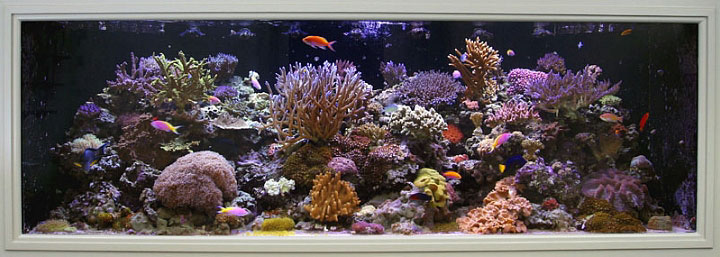
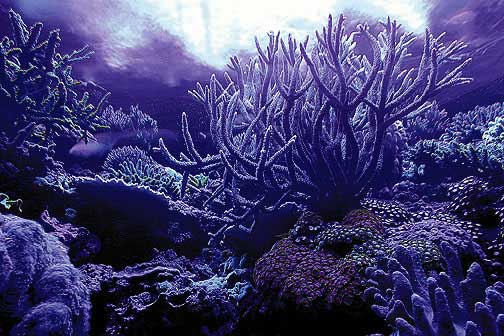
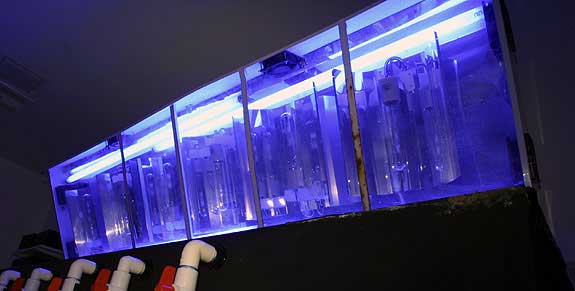
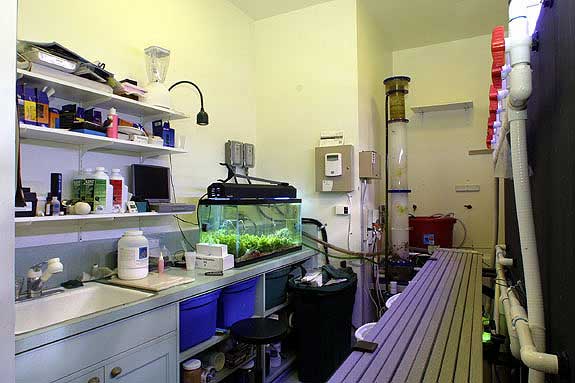
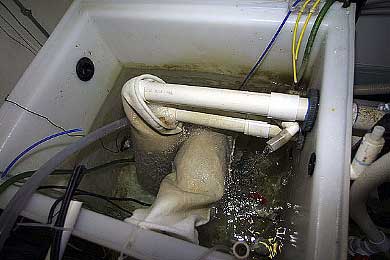
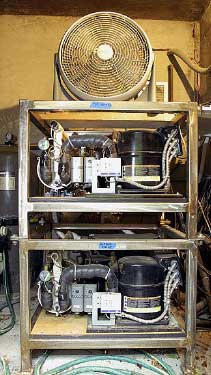
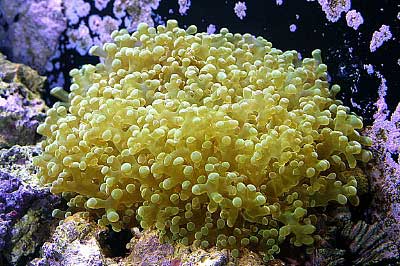
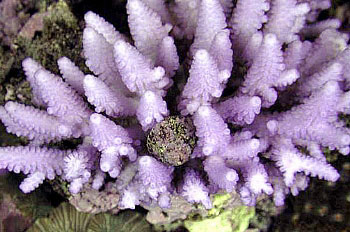
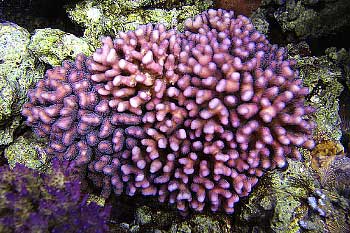
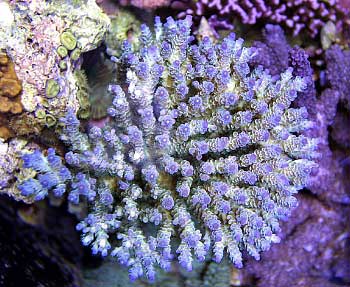
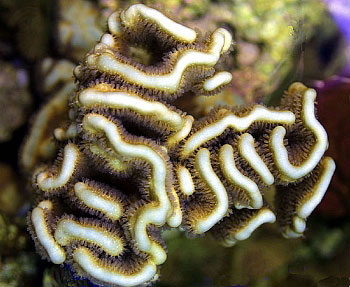
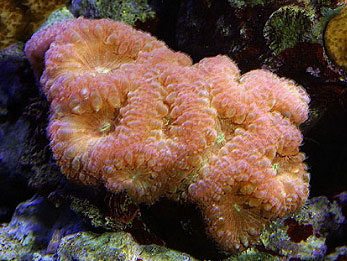

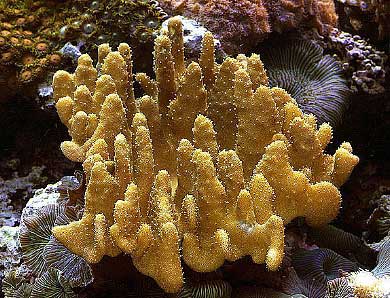
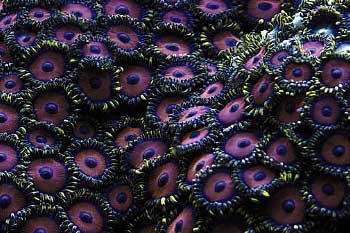
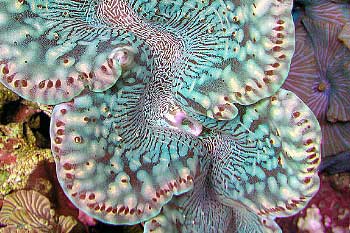
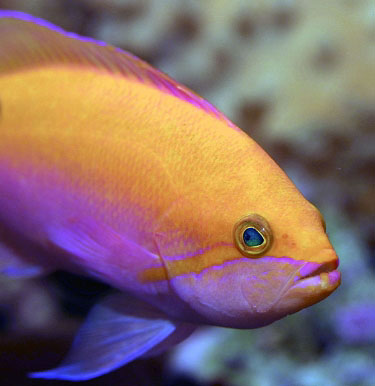
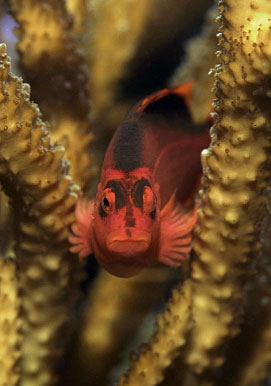
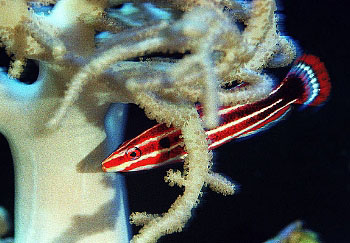
-2SM.jpg)
